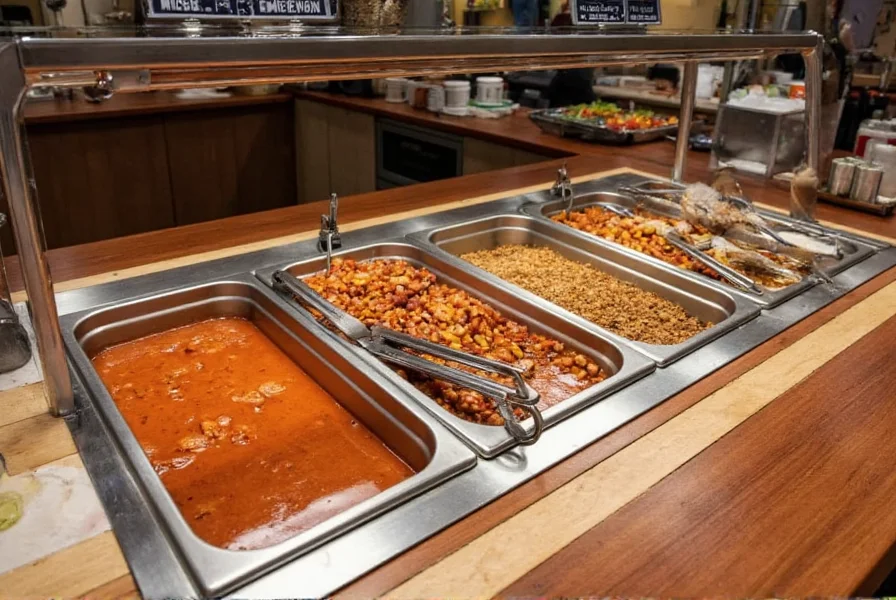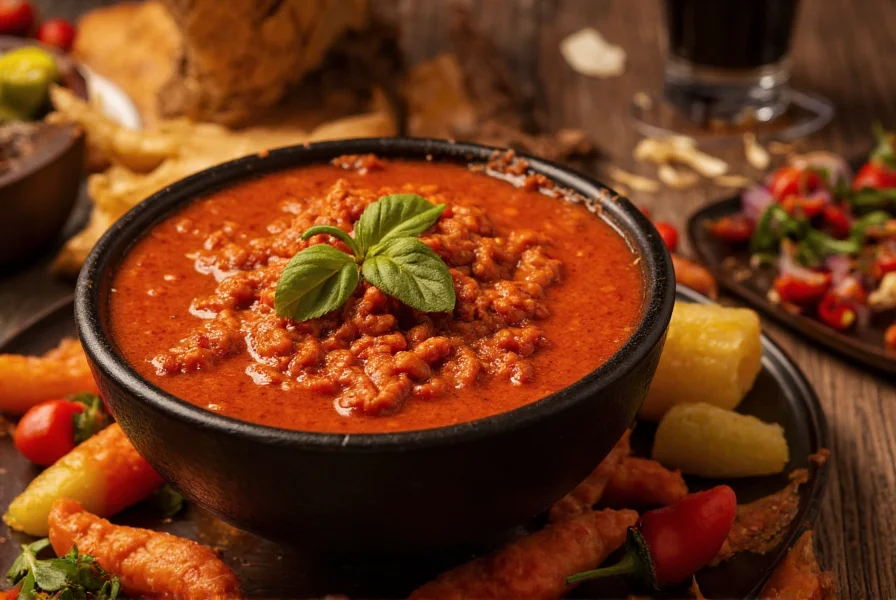Whether you're planning a casual get-together or searching for exceptional dining experiences, understanding chili bars opens up a world of flavorful possibilities. This comprehensive guide explores everything you need to know about chili bars, from their basic components to creating your own at home or finding the best establishments in your area.
What Exactly Is a Chili Bar?
The term "chili bar" describes two distinct but related concepts in the food world. First, it refers to restaurants or food establishments that specialize in serving chili in various styles and preparations. Second, it describes a popular party food setup where a base chili is served alongside numerous toppings, allowing guests to customize their bowls.
Unlike traditional restaurants with fixed menu items, a well-executed chili bar offers flexibility and personalization. The core concept revolves around a high-quality base chili—typically a meat-based or vegetarian option—served with an array of complementary toppings that enhance flavor, texture, and visual appeal.
Types of Chili Bar Experiences
Understanding the different chili bar formats helps you determine which experience best suits your needs:
| Type | Characteristics | Best For |
|---|---|---|
| Restaurant Chili Bars | Establishments specializing in multiple chili varieties with professional preparation | Dining out, special occasions, trying regional variations |
| Home Party Chili Bars | DIY setups with base chili and assorted toppings for gatherings | Casual entertaining, game days, family dinners |
| Food Truck Chili Bars | Mobile vendors offering quick-service chili customization | Casual meals, festivals, quick lunch options |
Essential Components of a Successful Chili Bar
Creating a memorable chili bar experience requires careful consideration of several key elements. Whether you're setting up at home or evaluating a restaurant, these components determine quality:
Base Chili Options
The foundation of any chili bar is the chili itself. Quality establishments and thoughtful home hosts typically offer at least two base options:
- Traditional meat chili - Usually featuring ground beef or chuck with authentic Southwestern spices
- Vegetarian/vegan chili - Made with beans, lentils, or plant-based proteins
- Regional variations - Such as Cincinnati-style, Texas red, or white chicken chili
Thoughtfully Curated Toppings
The topping selection transforms a simple bowl of chili into a customizable experience. A well-designed chili bar includes toppings that provide contrasting textures, temperatures, and flavors:

- Cooling elements: Sour cream, Greek yogurt, avocado
- Crunchy additions: Tortilla strips, fried onions, crushed corn chips
- Flavor enhancers: Fresh cilantro, lime wedges, pickled jalapeños
- Cheese varieties: Shredded cheddar, queso fresco, pepper jack
- Heat boosters: Hot sauces, fresh chilies, chili flakes
How to Create a Budget-Friendly Home Chili Bar
Setting up a chili bar for your next gathering doesn't require professional equipment or expensive ingredients. Follow these practical steps for a successful DIY chili bar:
Planning Your Setup
Before shopping, determine your guest count and dietary restrictions. A standard ratio is approximately 1 cup of base chili per person, plus 2-3 topping options per guest. For a gathering of 10 people, plan for:
- 6-8 cups of prepared base chili
- 6-8 topping varieties (2-3 ounces per topping per person)
- Adequate serving utensils and small bowls
Smart Shopping Strategies
When preparing a chili bar on a budget, focus your spending on quality chili ingredients while getting creative with toppings:
- Purchase dried beans instead of canned for your base chili
- Choose seasonal produce for fresh toppings
- Make your own tortilla chips from stale corn tortillas
- Buy cheese in blocks and shred it yourself
Finding Exceptional Restaurant Chili Bars
When searching for "chili bar near me," look beyond basic menu listings to identify establishments that truly excel. The best chili bars demonstrate these qualities:
- Multiple chili varieties - Shows commitment to the concept beyond a single menu item
- Freshly prepared toppings - Avoid places using pre-packaged, shelf-stable toppings
- Knowledgeable staff - Can explain ingredients and preparation methods
- Regional authenticity - Especially important for specialty styles like Cincinnati or Texas chili

Creative Variations to Elevate Your Chili Bar
Whether at home or in a restaurant setting, these innovative approaches can transform a standard chili bar into a memorable culinary experience:
Seasonal Adaptations
Adjust your chili bar offerings based on the time of year:
- Fall/Winter: Hearty bases with pumpkin or sweet potato, warm toppings like roasted corn
- Spring/Summer: Lighter bases with white beans, fresh herb toppings, citrus elements
Dietary Inclusive Options
Modern chili bars should accommodate various dietary needs without compromising flavor:
- Gluten-free cornbread instead of traditional bread service
- Vegan cheese alternatives alongside dairy options
- Clearly labeled toppings for common allergens
Common Chili Bar Mistakes to Avoid
Even experienced hosts and restaurants sometimes miss the mark with chili bars. Watch out for these common pitfalls:
- Overcomplicated topping selection - More than 10 toppings can overwhelm guests
- Cold toppings on hot chili - Creates unpleasant temperature contrasts
- Insufficient base chili - Toppings shouldn't dominate the bowl
- Poor flow design - Toppings should be arranged logically from base to finishers
Conclusion: Maximizing Your Chili Bar Experience
A well-executed chili bar offers both simplicity and sophistication, making it equally suitable for casual weeknight dinners and special occasions. By understanding the essential components, planning thoughtfully, and paying attention to quality details, you can create or identify exceptional chili bar experiences that satisfy diverse palates and dietary needs. Whether you're searching for the perfect "chili bar restaurant near me" or planning your next gathering, these insights ensure a flavorful, customizable meal that guests will remember.
Frequently Asked Questions
What's the difference between a chili bar and regular chili service?
A chili bar specifically offers multiple topping options that allow guests to customize their bowls, whereas regular chili service typically serves chili as a complete dish without customization options. The interactive element of selecting toppings defines a true chili bar experience.
How many toppings should a proper chili bar have?
An ideal chili bar offers 6-10 topping options, providing enough variety without overwhelming guests. This typically includes 2-3 cooling elements, 2-3 crunchy additions, 1-2 cheese options, and 1-2 heat boosters. Quality matters more than quantity—fresh, well-prepared toppings beat a large selection of mediocre options.
Can I create a successful chili bar on a tight budget?
Absolutely. Focus your budget on quality base chili ingredients while getting creative with toppings. Use dried beans instead of canned, make your own tortilla chips from stale corn tortillas, and choose seasonal produce. A successful budget chili bar prioritizes 2-3 high-quality toppings over numerous low-quality options. For a gathering of 10, you can create an impressive chili bar for under $30 with smart planning.
What makes a restaurant chili bar stand out from competitors?
Exceptional restaurant chili bars distinguish themselves through regional authenticity, fresh preparation methods, and thoughtful topping combinations. Look for establishments that offer multiple chili varieties (not just one standard option), prepare toppings in-house rather than using pre-packaged items, and have staff knowledgeable about their ingredients and preparation techniques. The best chili bars treat each component with care rather than assembling generic toppings.
How do I accommodate dietary restrictions at a chili bar?
Successfully accommodating dietary needs requires clear labeling and strategic planning. Offer a dedicated vegetarian/vegan chili base prepared separately from meat options, use distinct serving utensils for each topping, and provide labels indicating common allergens. For gluten-free needs, offer cornbread instead of regular bread service. The key is making accommodations visible and accessible without segregating guests—everyone should feel welcome to enjoy the full chili bar experience.











 浙公网安备
33010002000092号
浙公网安备
33010002000092号 浙B2-20120091-4
浙B2-20120091-4